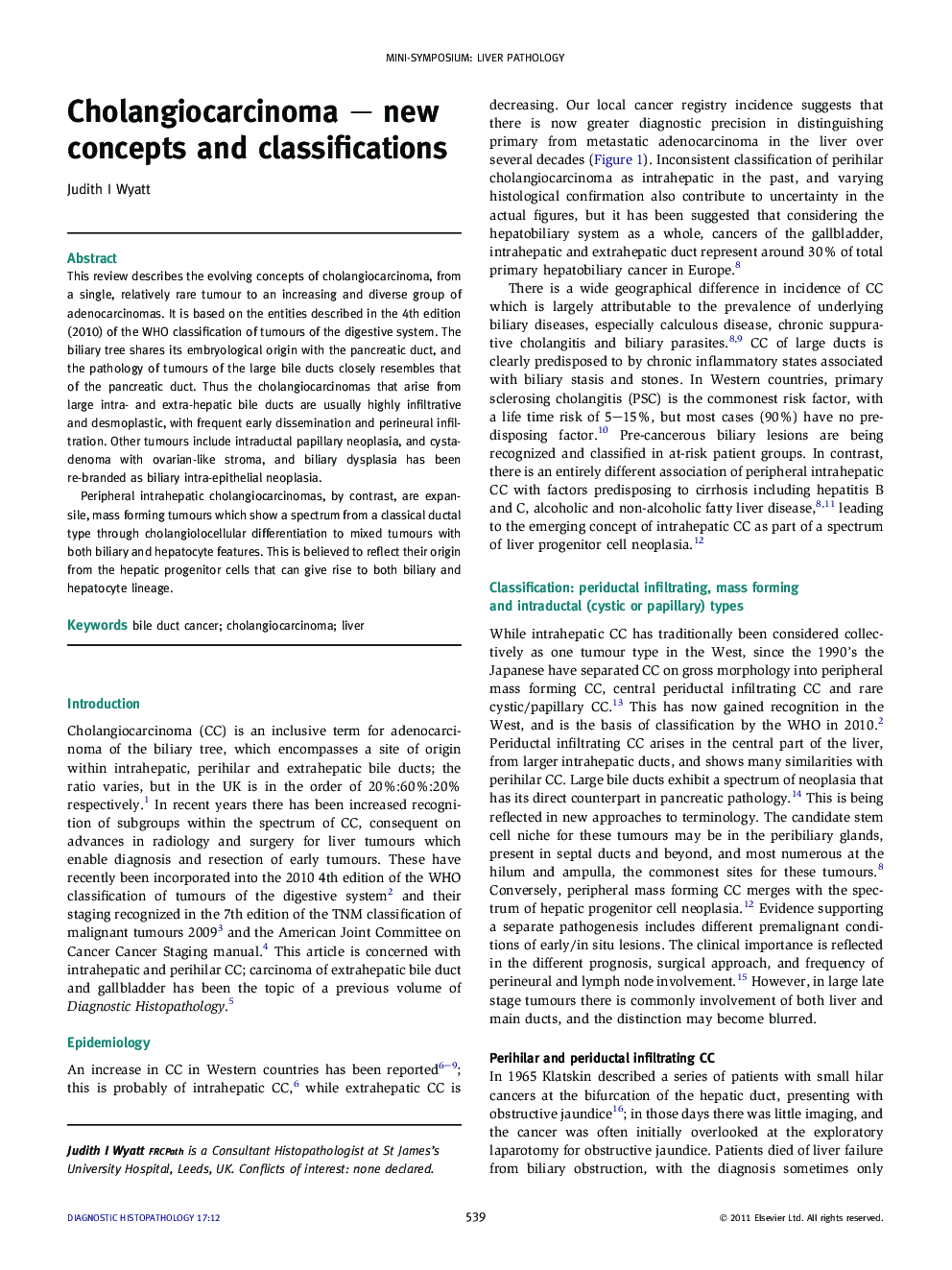| Article ID | Journal | Published Year | Pages | File Type |
|---|---|---|---|---|
| 4131448 | Diagnostic Histopathology | 2011 | 9 Pages |
This review describes the evolving concepts of cholangiocarcinoma, from a single, relatively rare tumour to an increasing and diverse group of adenocarcinomas. It is based on the entities described in the 4th edition (2010) of the WHO classification of tumours of the digestive system. The biliary tree shares its embryological origin with the pancreatic duct, and the pathology of tumours of the large bile ducts closely resembles that of the pancreatic duct. Thus the cholangiocarcinomas that arise from large intra- and extra-hepatic bile ducts are usually highly infiltrative and desmoplastic, with frequent early dissemination and perineural infiltration. Other tumours include intraductal papillary neoplasia, and cystadenoma with ovarian-like stroma, and biliary dysplasia has been re-branded as biliary intra-epithelial neoplasia.Peripheral intrahepatic cholangiocarcinomas, by contrast, are expansile, mass forming tumours which show a spectrum from a classical ductal type through cholangiolocellular differentiation to mixed tumours with both biliary and hepatocyte features. This is believed to reflect their origin from the hepatic progenitor cells that can give rise to both biliary and hepatocyte lineage.
